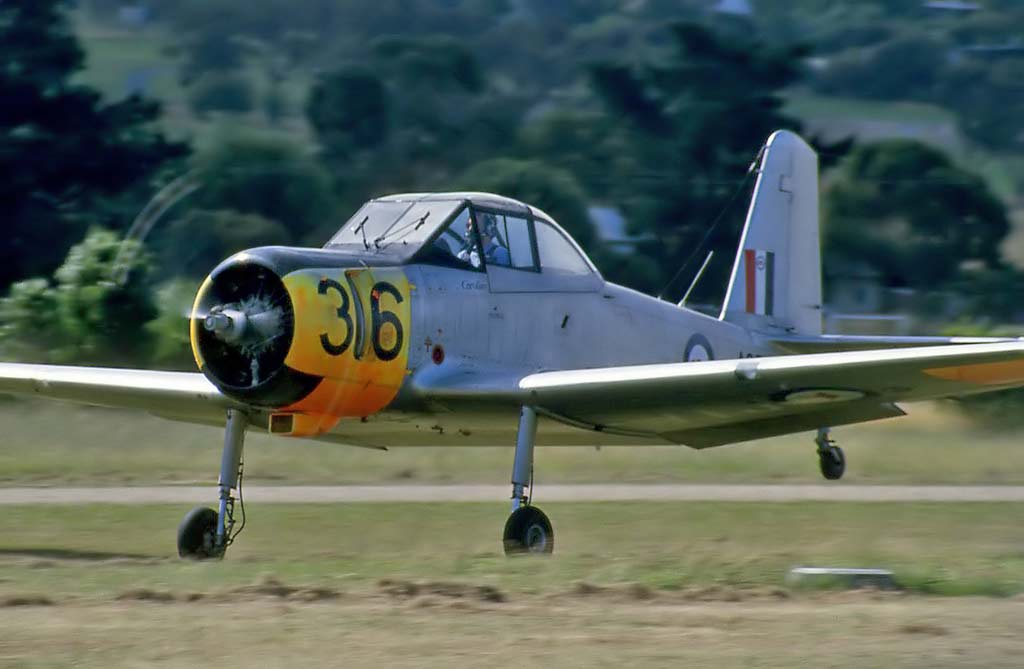The CAC Winjeel, an Australian-designed training aircraft, featured a Pratt & Whitney radial engine, serving from 1955 to 1994.
In brief
The CAC Winjeel, developed by the Commonwealth Aircraft Corporation (CAC), was an Australian training aircraft introduced in 1955. It was designed to provide basic to advanced training for the Royal Australian Air Force (RAAF). Powered by a Pratt & Whitney R985-AN-2 “Wasp Junior” radial engine, the Winjeel was known for its reliability and ease of handling. The aircraft served in the training role until 1975 and was later adapted for Forward Air Control (FAC) duties until 1994. The Winjeel was recognized for its role in training several generations of RAAF, Australian Army, and Royal Australian Navy pilots. A total of 62 Winjeels were produced.
The CAC Winjeel holds a significant place in the history of Australian military aviation as a primary training aircraft.
History of the Development of the CAC Winjeel
The CAC Winjeel was developed in the late 1940s and early 1950s to meet the Royal Australian Air Force’s need for a modern trainer aircraft. It was designed to replace both the de Havilland DH.82 Tiger Moth and the CAC Wirraway. The first prototype, designated CA-22, flew on 3 February 1951.
Initial government approval for the production of 62 aircraft came in September 1953, with the first production aircraft flying in February 1955. The Winjeel was fitted with the Pratt & Whitney Wasp engine, although a 336 kW (450 hp) Commonwealth Aircraft Corporation Cicada radial engine of indigenous design was considered.
The Winjeel operated with No. 1 Basic Flying Training School (BFTS) at Uranquinty, NSW, alongside the CAC Wirraway, and later at RAAF Point Cook, VIC. It was the RAAF’s ab initio trainer until retired in July 1977. It also served with the Central Flying School (CFS) at East Sale, VIC, and with No. 1 Air Trials Unit at Woomera, SA.
Design of the CAC Winjeel
The CAC Winjeel was a two or three-seat trainer aircraft, featuring a length of 8.92 meters (29.3 feet), a wingspan of 11.81 meters (38.7 feet), and a height of 2.52 meters (8.3 feet). Its empty weight was 1,542 kilograms (3,400 pounds), and its maximum take-off weight was 1,969 kilograms (4,341 pounds).
The aircraft was designed with a high-wing monoplane configuration, providing excellent visibility and stable flight characteristics. It was equipped with a fixed, tricycle undercarriage, making it suitable for operation from a variety of airfields. The Winjeel’s design emphasized simplicity, robustness, and economic operation and maintenance.

Performance of the CAC Winjeel
The Winjeel was powered by a Pratt & Whitney R985-AN-2 “Wasp Junior” 9-cylinder radial piston engine, producing 445 horsepower. It had a maximum speed of 181 mph (291 kph), a cruise speed of 165 mph (265 kph), and a service ceiling of 15,000 feet (4,572 meters). Its range was 551 miles (886 km), and it had a rate of climb of 1,500 feet per minute (457 m/min).
Compared to other training aircraft of the era, the Winjeel was praised for its handling and stability, especially its reluctance to spin, which was an essential feature for a trainer. However, this also meant it was less suitable for advanced aerobatic training.
Variants of the CAC Winjeel
The two main variants of the Winjeel were the CA-22 prototype and the CA-25 production model. The CA-22 prototypes underwent extensive testing and modifications, leading to the final design of the Winjeel. The CA-25 was the definitive production variant, with a total of 62 aircraft built for the RAAF.
Military Use and Combat of the CAC Winjeel
The Winjeel was never armed by default. However, in its later years, it was adapted for the Forward Air Control role, where some Winjeels were equipped to carry smoke bombs for target marking. The Winjeel served with the RAAF, Australian Army, and Royal Australian Navy, training pilots in basic and advanced flying skills. It was eventually replaced by the CT-4 Airtrainer in 1975 but continued to serve in the FAC role until 1994, when it was replaced by the Pilatus PC-9.
The CAC Winjeel was a cornerstone of Australian military pilot training for several decades. Its design, performance, and versatility made it an ideal trainer, and its adaptation to the FAC role demonstrated its utility beyond basic flight training. The Winjeel’s legacy continues, with several examples preserved in museums and private collections.
Back to the Trainers section.